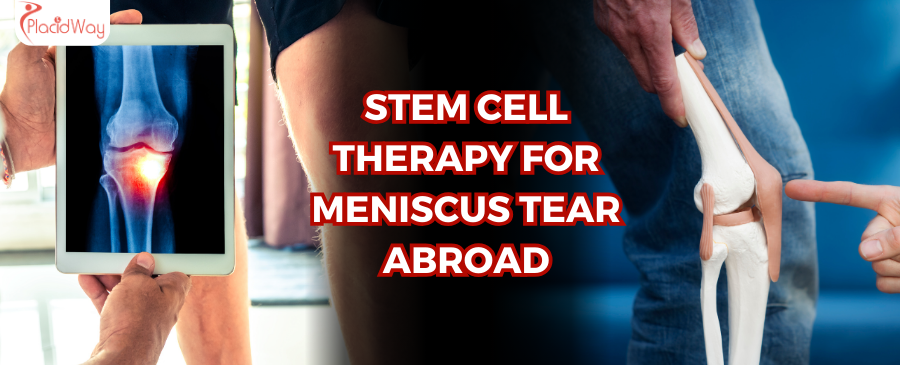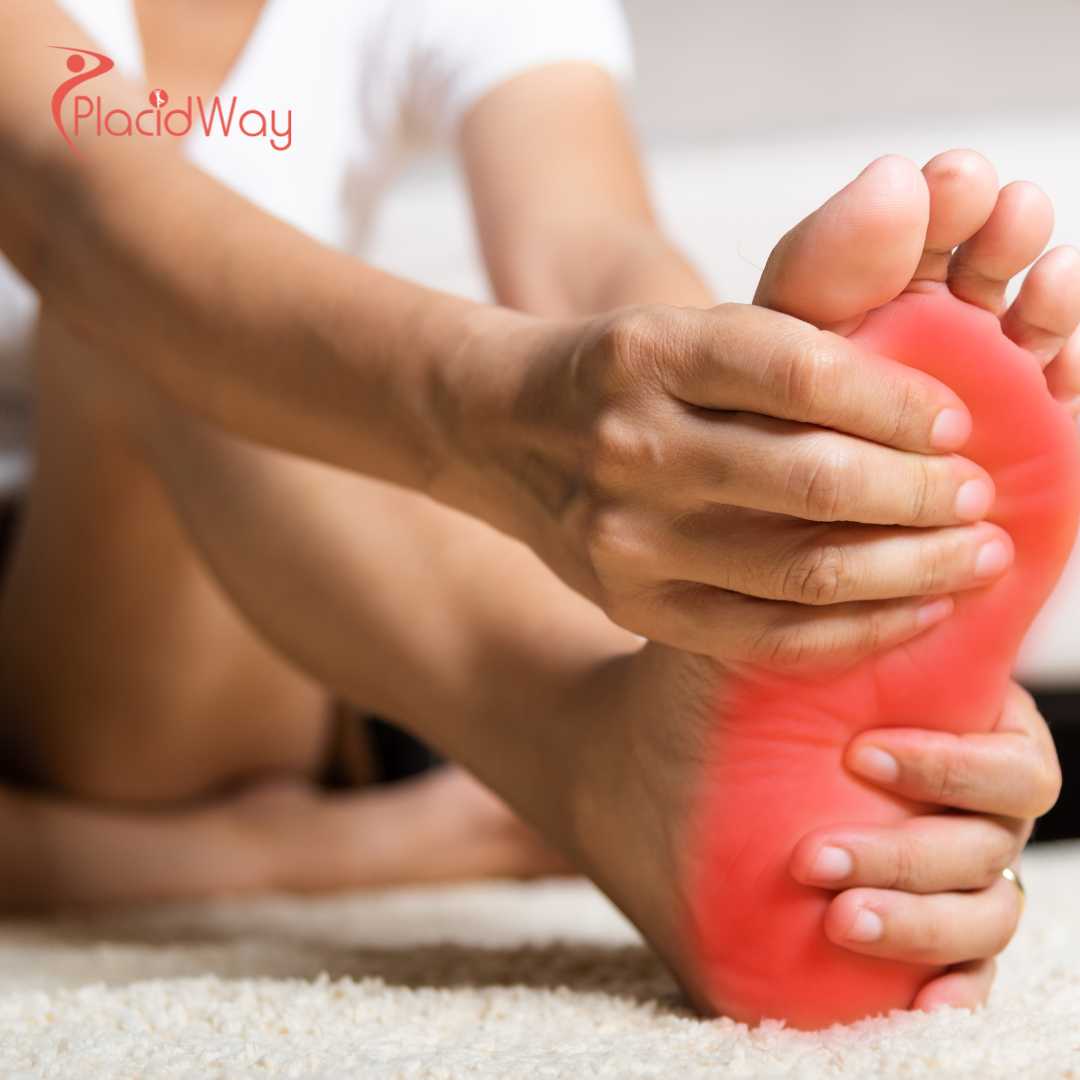
Dealing with a meniscus tear can be a frustrating and painful experience. This C-shaped piece of cartilage in your knee acts as a shock absorber, but a sudden twist or even long-term wear and tear can cause it to rip. Traditionally, treatment options have ranged from physical therapy to invasive surgery. However, the field of regenerative medicine is offering new hope. Stem cell therapy for a meniscus tear is emerging as a powerful, minimally invasive option that harnesses your body's natural healing abilities to repair the damage from within.
If you're tired of persistent knee pain, stiffness, and the clicking or locking sensation that comes with a meniscus injury, this guide is for you. We understand you have questions about how this innovative treatment works, what the procedure involves, and whether it’s the right choice for your situation. Many people are searching for an alternative to meniscus surgery, one that promotes actual healing of the tissue rather than just removing the damaged parts. This is where stem cells come in. They are essentially your body's raw materials—cells that can develop into different cell types, including cartilage cells.
In this comprehensive FAQ-style blog post, we will answer all the important questions you might have. From understanding the science behind the therapy to exploring costs, recovery time, and success rates, we’ll cover everything you need to know. Our goal is to provide clear, expert-backed information to help you make an informed decision about your knee health and explore the potential of regenerative medicine for knee injuries.
What is stem cell therapy for a meniscus tear?
Think of stem cells as your body's internal repair crew. They are unique, "undifferentiated" cells that have the remarkable ability to transform into specialized cells, such as cartilage, muscle, or bone cells. When you have a meniscus tear, the blood supply to that area is often poor, which is why it struggles to heal on its own.
By introducing a concentrated number of stem cells directly to the injury site, the therapy jumpstarts the healing process. These cells can potentially differentiate into new cartilage cells (chondrocytes), replace the damaged ones, and release powerful anti-inflammatory agents that reduce swelling and pain. This process not only helps repair the tear but also improves the overall health of the knee joint, which is a key advantage over traditional treatments that may only address the immediate symptom.
How does stem cell therapy work for meniscus tears?
The magic of stem cell therapy for knee pain lies in its multi-faceted approach to healing. Once injected into the knee joint, the stem cells act in several ways:
- Reduce Inflammation: Stem cells release proteins called cytokines that are potent anti-inflammatory agents. This immediately helps to reduce the swelling and pain associated with a meniscus tear.
- Regenerate Tissue: This is the core of the treatment. The stem cells receive signals from the damaged tissue and can differentiate into chondrocytes—the cells that form cartilage. This helps to rebuild the torn meniscus.
- Recruit Other Healing Cells: The injected cells also act like a beacon, sending out signals that attract your body's own local stem cells and growth factors to the injury site, amplifying the repair process.
- Prevent Cell Death: They can also prevent existing, healthy cartilage cells from dying off, which is crucial for preventing the onset or progression of osteoarthritis, a common long-term consequence of a meniscus injury.
Is stem cell therapy a permanent fix for a meniscus tear?
The goal of stem cell therapy for a meniscus tear is to achieve long-term structural repair, not just temporary symptom relief. For many patients, the results can last for many years, as the therapy helps the body regenerate tissue that is stronger and more resilient. Unlike corticosteroid injections, which merely mask pain and can degrade tissue over time, stem cell therapy aims to fundamentally heal the injury.
However, factors like the extent of the tear, the presence of arthritis, your activity level, and your body's unique healing capacity all play a role. For some, a single treatment is enough for lasting results. For others with more significant damage, a follow-up treatment may be beneficial down the road. It's best viewed as a way to turn back the clock on the injury and restore the joint's health, rather than a one-time magical cure.
Who is a good candidate for stem cell therapy for a meniscus tear?
This treatment isn't for everyone, but it can be life-changing for the right person. You might be an ideal candidate if you fit the following profile:
- You have been diagnosed with a partial or degenerative meniscus tear.
- You experience persistent knee pain, swelling, clicking, or instability that hasn't improved with conservative treatments like physical therapy, rest, or anti-inflammatory medications.
- You want a meniscus repair without surgery and wish to avoid the long recovery and potential risks associated with a meniscectomy (removal of the meniscus).
- You are active and want to return to your lifestyle without being held back by knee pain.
- You have been told you are a "bone-on-bone" case, but want to explore options before considering a full knee replacement.
Conversely, individuals with complete, complex tears that cause severe mechanical issues (like a locked knee) or those with advanced, systemic inflammatory diseases might not be the best candidates. A thorough evaluation by a regenerative medicine specialist is essential.
What are the different types of stem cells used for meniscus repair?
When it comes to regenerative medicine for the knee, the source of the stem cells is very important. The two primary sources used in orthopedic procedures are:
- Bone Marrow Aspirate Concentrate (BMAC): These stem cells are harvested from your own bone marrow, usually from the back of the hip bone (iliac crest). This is a minimally invasive procedure done under local anesthesia. Bone marrow is a rich source of MSCs and other growth factors essential for cartilage and bone repair.
- Adipose-Derived Stem Cells: These stem cells are collected from your body's fat tissue through a mini-liposuction procedure. Fat is an incredibly dense source of MSCs—containing hundreds of times more stem cells per volume than bone marrow.
Both sources have proven effective. The choice between them often depends on the physician's preference, the specific nature of your injury, and your overall health profile. Because these cells come from your own body, the risk of rejection or an adverse immune reaction is virtually zero.
What is the procedure for a stem cell injection for a meniscus tear?
The entire stem cell injection for the meniscus procedure is typically completed in just a few hours and does not require a hospital stay. Here’s a step-by-step breakdown:
- Step 1: Harvest. After numbing the area with a local anesthetic, the doctor will extract a small sample of bone marrow or fat tissue. This part of the process is generally quick and causes minimal discomfort.
- Step 2: Concentration. The collected sample is placed in a special device called a centrifuge, which spins at high speed to separate and concentrate the powerful stem cells and growth factors from other cells.
- Step 3: Injection. The final, concentrated product, known as the "stem cell injectate," is then prepared. The doctor will numb your knee and, using advanced imaging guidance (like ultrasound) to ensure perfect placement, inject the stem cells directly into and around your meniscus tear.
Is the stem cell procedure for a meniscus tear painful?
Most patients report that the procedure is very tolerable. The sensation of the bone marrow aspiration is often described as a deep pressure or a brief, dull ache. The knee injection itself feels similar to a standard joint injection. Any post-procedure discomfort is typically manageable with over-the-counter pain relievers like acetaminophen and by following the doctor's aftercare instructions.
It's important to remember that some inflammation after the procedure is actually a good sign—it means the healing cascade has been activated and the stem cells are going to work. This initial soreness usually subsides within a week.
What is the recovery time after stem cell therapy for a meniscus tear?
The meniscus tear recovery process after stem cell therapy is much faster and less restrictive than surgical recovery. There are no crutches for weeks on end or extensive immobilization. The general timeline looks like this:
- First Few Days: Rest and avoid strenuous activity. Gentle movement is encouraged to help the stem cells.
- Weeks 1-4: You will likely start a customized physical therapy program to gradually strengthen the knee and improve range of motion without stressing the healing meniscus.
- Months 1-3: Most patients experience a significant reduction in pain and an increase in function during this period. You can typically return to most daily activities.
- Months 3-6+: As the cartilage continues to regenerate, you can gradually reintroduce more demanding activities and sports, based on your doctor's guidance.
How much does stem cell therapy for a meniscus tear cost?
The cost of stem cell therapy for the knee is a significant consideration for many patients, especially since it is often not covered by insurance. The final price depends on several factors, making it important to get a detailed quote from your provider.
Here is a general cost comparison table to give you an idea of what to expect:
| Treatment Factor | Typical Cost Range (USD) | Notes |
|---|---|---|
| Single Knee Injection (Adipose-Derived) | $5,000 - $10,000 | Often more expensive due to the higher cell counts and extra processing step. |
| Single Knee Injection (Bone Marrow - BMAC) | $3,000 - $8,000 | Slightly less expensive but a very common and effective option. |
| International Clinics (e.g., Mexico, Panama) | $2,500 - $7,000 | Can be more affordable, but requires careful research into clinic accreditation and standards. |
| Additional Therapies (e.g., PRP) | +$500 - $1,500 | Many clinics combine stem cells with Platelet-Rich Plasma (PRP) to enhance results. |
While the upfront cost may seem high, it's important to compare it to the long-term costs of surgery, including deductibles, co-pays, time off work, and the potential need for future procedures like a knee replacement.
Does insurance cover stem cell therapy for meniscus tears?
This is one of the biggest hurdles for patients seeking this treatment. While the clinical evidence supporting its effectiveness is growing rapidly, it has not yet been adopted into mainstream insurance coverage plans. Patients typically have to pay for the procedure out-of-pocket.
However, many clinics offer financing options or payment plans to make the treatment more accessible. It's always a good idea to check with your specific insurance provider, as policies can change. In some cases, the consultation and diagnostic imaging (like an MRI) may be covered, even if the injection itself is not.
What are the benefits of stem cell therapy over surgery for a meniscus tear?
Choosing meniscus repair without surgery offers several compelling advantages:
- Preservation of Tissue: Arthroscopic surgery for a meniscus tear often involves a meniscectomy, which means removing the damaged portion of the cartilage. While this can relieve symptoms, it reduces the knee's natural cushioning and significantly increases the risk of developing osteoarthritis later in life. Stem cell therapy aims to heal and preserve your natural tissue.
- Lower Risk: As a simple injection, it avoids the risks associated with general anesthesia, infection from incisions, and post-surgical blood clots.
- Faster Recovery: You can walk out of the clinic on the same day. There is no need for prolonged use of crutches or a knee brace, and the rehabilitation process is much quicker and less painful.
- Holistic Healing: The therapy treats the entire joint environment, reducing inflammation and improving overall knee health, not just focusing on one torn piece of cartilage.
What are the risks or side effects of stem cell therapy for the knee?
Compared to surgery, stem cell therapy for a meniscus tear is an extremely safe procedure. The main risks are associated with the needle placement itself, which is why it is crucial to have the procedure performed by an experienced physician using imaging guidance. This ensures the cells are delivered precisely where they are needed and avoids injury to surrounding structures.
The temporary flare-up of pain and stiffness following the injection is a normal biological response and is a sign that the healing process has begun. This is managed easily with rest and simple pain relievers. Serious complications like infection or significant bleeding are highly unlikely.
Ready to Explore Your Options?
If you're considering stem cell therapy for your meniscus tear, PlacidWay can connect you with leading regenerative medicine specialists and top-rated clinics around the world. Discover personalized treatment plans and get the expert care you deserve.
Stem Cell Therapy Abroad










Share this listing